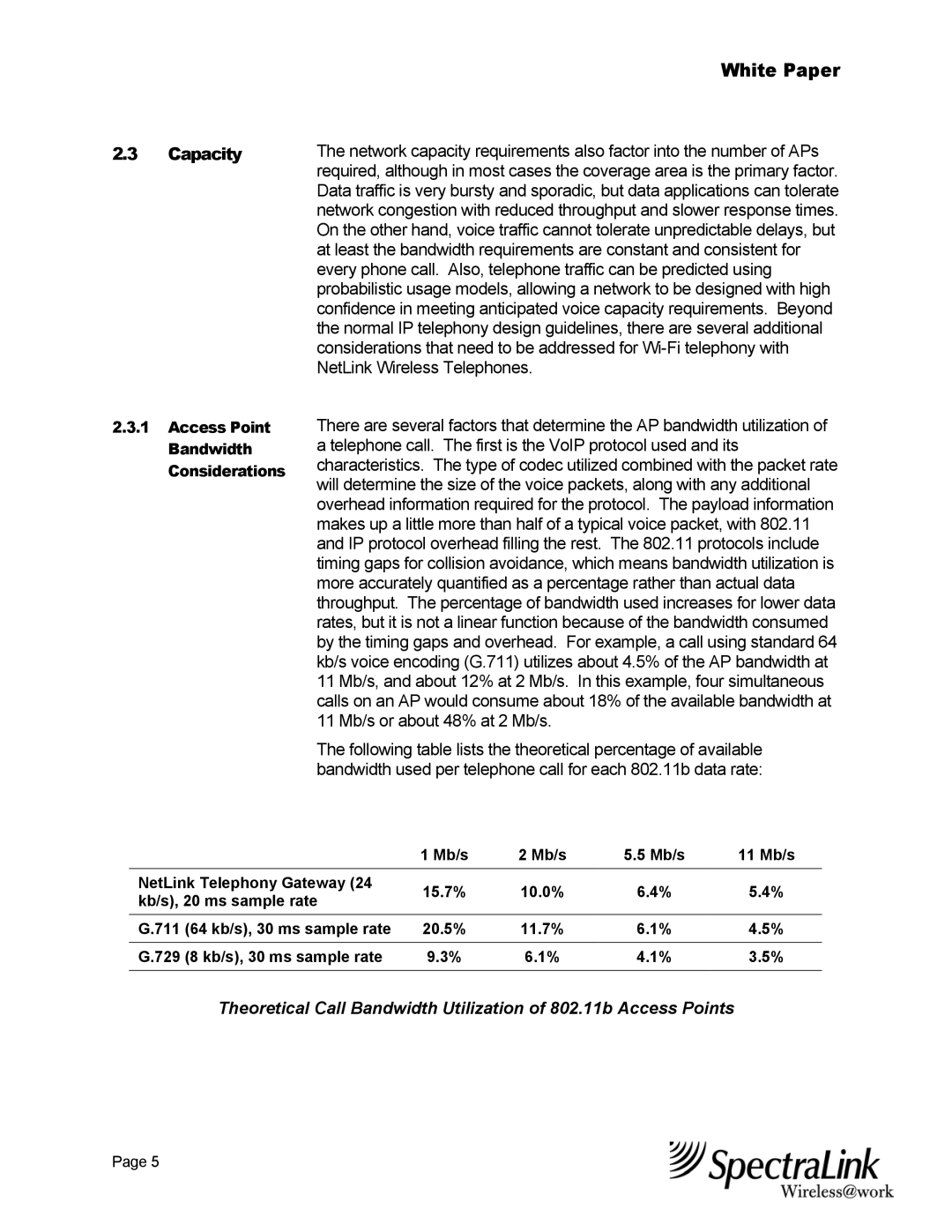
White Paper
2.3 Capacity The network capacity requirements also factor into the number of APs required, although in most cases the coverage area is the primary factor. Data traffic is very bursty and sporadic, but data applications can tolerate network congestion with reduced throughput and slower response times. On the other hand, voice traffic cannot tolerate unpredictable delays, but at least the bandwidth requirements are constant and consistent for every phone call. Also, telephone traffic can be predicted using probabilistic usage models, allowing a network to be designed with high confidence in meeting anticipated voice capacity requirements. Beyond the normal IP telephony design guidelines, there are several additional considerations that need to be addressed for
2.3.1Access Point Bandwidth Considerations
There are several factors that determine the AP bandwidth utilization of a telephone call. The first is the VoIP protocol used and its characteristics. The type of codec utilized combined with the packet rate will determine the size of the voice packets, along with any additional overhead information required for the protocol. The payload information makes up a little more than half of a typical voice packet, with 802.11 and IP protocol overhead filling the rest. The 802.11 protocols include timing gaps for collision avoidance, which means bandwidth utilization is more accurately quantified as a percentage rather than actual data throughput. The percentage of bandwidth used increases for lower data rates, but it is not a linear function because of the bandwidth consumed by the timing gaps and overhead. For example, a call using standard 64 kb/s voice encoding (G.711) utilizes about 4.5% of the AP bandwidth at 11 Mb/s, and about 12% at 2 Mb/s. In this example, four simultaneous calls on an AP would consume about 18% of the available bandwidth at 11 Mb/s or about 48% at 2 Mb/s.
The following table lists the theoretical percentage of available bandwidth used per telephone call for each 802.11b data rate:
|
| 1 Mb/s | 2 Mb/s | 5.5 Mb/s | 11 Mb/s | |
NetLink Telephony Gateway (24 | 15.7% | 10.0% | 6.4% | 5.4% | ||
kb/s), 20 ms sample rate | ||||||
|
|
|
| |||
G.711 | (64 kb/s), 30 ms sample rate | 20.5% | 11.7% | 6.1% | 4.5% | |
|
|
|
|
|
| |
G.729 | (8 kb/s), 30 ms sample rate | 9.3% | 6.1% | 4.1% | 3.5% | |
|
|
|
|
|
| |
Theoretical Call Bandwidth Utilization of 802.11b Access Points
Page 5
